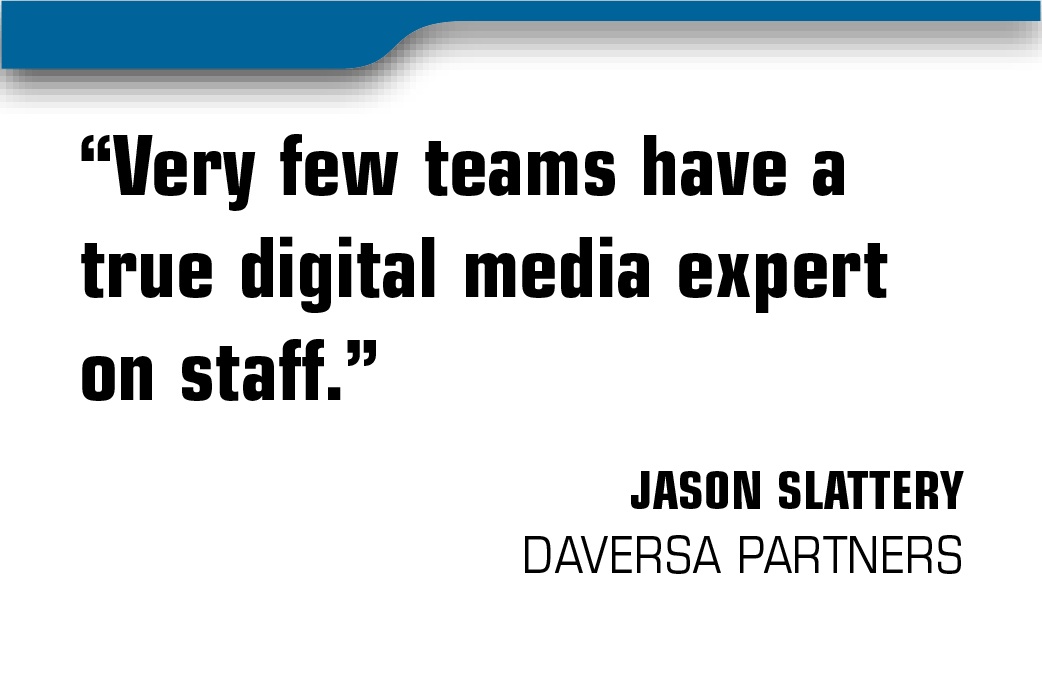During the past year, I have come to the conclusion that many sports organizations have some sort of social media platform, but the majority has no integrated strategy that drives the platform to achieve organizational rather than just departmental agendas.
Sure there are Facebook pages, Groupon offers, tweeting and a number of other activities, but many organizations have different departments doing their own things. Sometimes one department is unaware what the other departments are doing, and usually they are unaware about why they are doing it, other than the fact everyone is doing it, so we need to do it as well.
If 2,387 people “like” you, what does it mean? Why do they like you? How much do they like you? What about the 986 people who don’t like you? Why don’t they like you? What would it take to get them to like you? What was it about the Groupon offer that they liked? Have they come back without an offer, or are they just butterflies looking for the next bright flower? Do we know if there is a place for a “toll booth” to monetize our efforts, and do we know the best location for the toll booth?
I pose these questions to you, Dear Reader (one of my favorite Stephen King terms), because it is essential that we find the answers to these and many more questions, as well. In my opinion, this can only be accomplished by recruiting experienced executives and innovators from the digital media space and asking them to be space invaders, or perhaps space innovators, in the sports industry.
Lack of talent
In formulating this column, I talked with a number of people, including Jason Slattery of Daversa Partners, an executive recruiting firm. He took the time to share some of his thoughts with me and gave me even more to think about.
“Sports teams and brands need to develop a comprehensive and sweeping digital media strategy that takes advantage of inherent team affinity and builds a steady and irrevocable revenue stream independent of television rights and ticket sales,” Slattery said. “Companies like Gilt Groupe and Groupon have grown from unknown websites to multibillion-dollar companies because they developed a digital media strategy and adjusted, corrected and expanded that strategy as the market responded.”
Asked why sports teams and other organizations have not achieved these same levels of success, Slattery responded that it was lack of talent. In his assessment, “they [sports teams] don’t have the internal talent to develop, nurture and tweak their digital media strategy because very few teams have a true digital media expert on staff — because they have yet to make a significant investment in talent to push the envelope to invest, create and evaluate new ideas.”
For example, the growth of business analytics in professional sports, especially the NBA, can be traced to the efforts and successes of Houston Rockets general manager Daryl Morey, who served in a business analytics role with the Boston Celtics and was instrumental in creating the Sloan Sports Analytics Conference at MIT. It, of course, can be traced in part to the success and popularity of Michael Lewis’ “Moneyball.”
The Phoenix Suns, always early adopters, are in the final stages of hiring a social media specialist. According to Jeramie McPeek, Suns vice president of digital, “We believe that having one person completely dedicated to social media will allow us to make significant strides in engaging our existing fan base, connecting with and developing a new generation of fans, and ultimately creating new revenue opportunities.”
Reaching the community
The concept of a chief digital officer would be based upon recruiting a talented and experienced visionary from the digital media space to join a sports organization. The next step is to elevate the thinking, planning, development, execution and growth at the team level, which, based upon the sharing (and copying) of best practice modes, would elevate that particular league and, in time, other leagues as well. Slattery estimates that a well conceived, designed and executed digital media strategy could generate $7 million to $10 million in new net revenue annually.
 |
We talk incessantly about online communities and the benefits and potential of reaching those participants. That’s interesting, because sports fans are also a community, and much more passionate about interests and preferences than most of the online communities and followers that have “liked” Groupon, Gilt Groupe, Rue La La, Zynga, Twitter and Facebook and helped them become (or about to become) billion-dollar businesses. It could be argued that none of the companies I mentioned puts forth a tangible
 |
| Companies like Gilt Groupe (top) and Rue La La grew by being able to reach online communities. |
product that it has produced or generated from some type of raw materials and processing. They are effective mediums and conduits for moving other people’s products and services. Thus, they began as unrecognizable entities lacking a brand or a presence in their initial phase and entry into the market.
Contrast that with the much-hyped, anticipated and hoped-for NFL team in Los Angeles. If that team becomes a reality, it will have a brand, perception, expectation and following within 30 seconds of its birth. Unlike the digital media brands I mentioned, it also will have an initial cost north of $750 million at birth. The number of “likes” that could be converted into buyers with such an opportunity could be staggering both in terms of number and the speed of achieving that number.
While I am a firm believer in promoting from within, I am also a firm believer in bringing in catalysts and big thinkers from the outside who have the necessary skills, experience and vision to examine a particular space, assess the strengths and weaknesses, and create opportunities and possibilities to expand not only that space, but also the world view of the organization in reaching, communicating and monetizing the inhabitants of that space.
Remember, there are a lot of navigators but very few explorers. A chief digital officer is Columbus, not MapQuest.
Bill Sutton (wsutton@bus.ucf.edu) is a professor and associate director of the DeVos Sport Business Management Program at the University of Central Florida and principal of Bill Sutton & Associates. Follow him on Twitter @Sutton_Impact.







